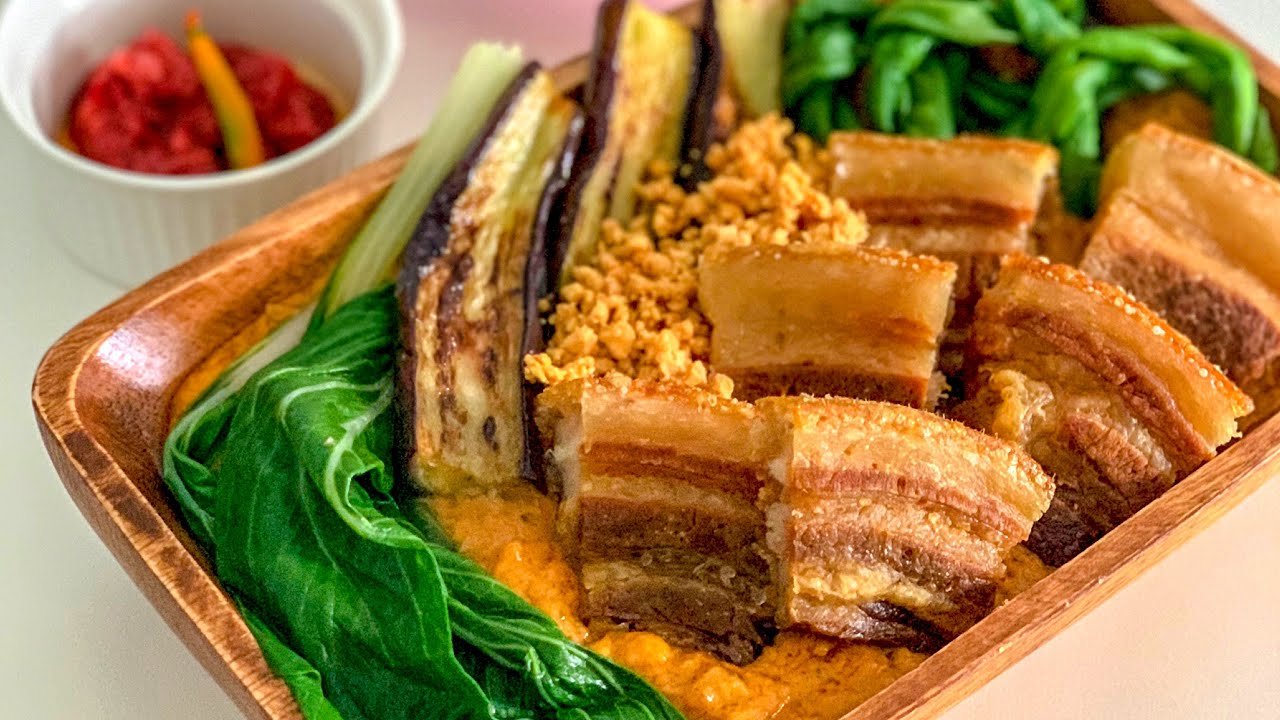"Kare-Kare: A Journey Through the Philippines' Creamy Peanut Stew"
Embark on a culinary journey to the Philippines, where kare-kare, a symphony of rich flavors and hearty textures, reigns supreme. This dish is a testament to the ingenuity of Filipino cuisine, transforming humble ingredients into a masterpiece of taste.
Kare-kare is a beloved Filipino stew that showcases the harmonious blend of savory, nutty, and slightly sweet flavors. Its signature ingredient is a rich and thick peanut sauce, which envelops tender pieces of oxtail, beef, or tripe, along with a medley of vegetables, such as eggplant, string beans, and bok choy.
Filipinos enjoy kare-kare as a comforting and celebratory dish, often served during special occasions, family gatherings, and festive celebrations. It's a dish that brings people together, fostering a sense of community and shared enjoyment.
The origins of kare-kare are believed to trace back to Pampanga, a province in the Philippines known for its culinary prowess. The dish is said to have evolved from a pre-colonial stew called "patis," which featured a similar peanut sauce but with seafood as the main protein.
Kare-kare is traditionally served with a steaming mound of rice, the perfect canvas to soak up the rich sauce. A dollop of bagoong, a fermented shrimp paste, adds a salty and umami-rich counterpoint to the dish's flavors. Some also enjoy kare-kare with a side of sautéed shrimp paste with tomatoes and chopped onions for an added burst of flavor.
Interestingly, the name "kare-kare" is said to have originated from the phrase "kari-kari," which means "to cook slowly" in Tagalog. This slow cooking method is essential for tenderizing the meat and allowing the flavors to meld harmoniously.



Ingredients:
500g oxtail and tripe (you can use beef or pork if preferred)
1 eggplant, sliced
1 bundle of string beans, cut into 2-inch lengths
2-3 pieces of banana blossoms
1/2 cup ground peanuts or peanut butter
1 small onion, minced
4 cloves garlic, minced
2 tablespoons shrimp paste (bagoong)
2 tablespoons cooking oil
Salt and pepper to taste
1/2 cup rice flour (optional for thickening)
Bok choy leaves (for garnish)
Water
Instructions:
Preparation: Start by boiling the oxtail and tripe in a large pot with enough water to cover them. Simmer until the meats are tender, which may take 2-3 hours. You can use a pressure cooker to expedite the process.
Sauté the Aromatics: In a separate pan, heat the cooking oil over medium heat. Sauté the minced onion and garlic until they turn translucent.
Make the Peanut Sauce: Once the aromatics are sautéed, add the ground peanuts or peanut butter and stir well. You can also add some rice flour at this point to thicken the sauce if desired. Continue to stir and cook for a few minutes.
Add the Meat: Strain the boiled oxtail and tripe and add them to the pan with the peanut sauce. Mix well and let them simmer together for a few minutes to meld the flavors.
Season and Simmer: Add water to the mixture until you reach your desired consistency. Season with salt and pepper to taste. Let the mixture simmer for about 10-15 minutes, occasionally stirring to avoid sticking.
Cook the Vegetables: In a separate pot, blanch the vegetables (eggplant, string beans, and banana blossoms) until they are tender but still crisp. Drain and set aside.
Serve: Kare-Kare is traditionally served with a side of shrimp paste (bagoong). You can serve it on the side for dipping or mix it directly into the Kare-Kare.
Here are some interesting facts about kare-kare:
The peanut sauce is the heart of kare-kare, and its preparation is a labor of love. Roasted peanuts are ground into a paste, then simmered with annatto seeds, which give the sauce its distinctive reddish-orange hue.
Kare-kare is often served with bagoong, a fermented shrimp paste that adds a salty, umami-rich kick to the dish. Bagoong is a staple condiment in Filipino cuisine and is used to enhance the flavors of various dishes.
The vegetables in kare-kare are typically simmered until tender but still retain a slight crunch, providing a textural contrast to the soft meat and rich sauce.
Kare-kare is a versatile dish, and variations exist across different regions of the Philippines. Some versions incorporate seafood, such as shrimp or squid, while others add a touch of sweetness with banana blossoms or pineapple chunks.
Whether you're a seasoned Filipino food enthusiast or a curious culinary explorer, kare-kare is an invitation to experience the richness and depth of Filipino cuisine. Let your taste buds embark on a journey of discovery, savoring the symphony of flavors and textures that make this dish a true gem of the culinary world.
#KareKareCraze #PeanutSauceParadise #BagoongBalance #PeanutSaucePerfection
